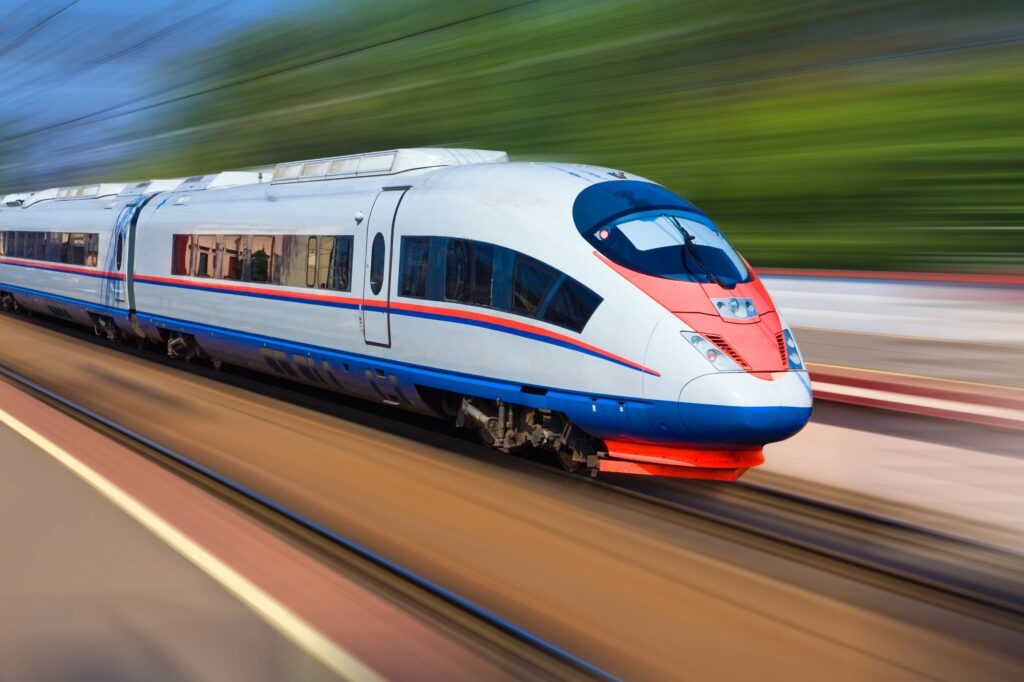Trains have long been seen as the most efficient – and environmentally friendly – way to transport large numbers of people and large amounts of goods over long distances. And now an Israeli startup envisions a revolutionary way to make this stalwart of mass movement even more efficient.
DirecTrain’s “Dynamic Coupling” solution is to allow trains to couple and decouple while moving – joining or separating two locomotives together on the fly in order to maximize access for smaller stations without losing the speed of express journeys that only stop at more central spots.
Two trains, each with their own engine, are connected as they leave a starting point, and at a certain stage one can disconnect and travel onto a different line to reach smaller stations, while the other can continue on as a express service, DirecTrain CEO Alberto Mandler tells NoCamels.
Similarly, two trains can connect when one joins a central line after collecting passengers from more remote stations, allowing two locomotives to travel as one, moving more people and at a higher speed, explains Mandler.
“Today [trains] pass through a lot of intermediate stations and then reach the city,” says Mandler. “We can change it completely, because we are able to connect and disconnect trains on demand.”
An experienced aerospace and electrical engineer, Mandler calls this connectivity a “main game changer” for transportation. He also points out that we can already successfully connect two planes traveling at 700 kilometers per hour in order to refuel or bring a craft to the International Space Station even as it moves at some 30,000 kilometers per hour.
What is more, he says, the DirecTrain solution uses the existing infrastructure involved in coupling two trains, without having to make extensive – and expensive – accommodations.
Today, automatic coupling only takes place in stations, with one moving train effectively “colliding” with a stationary locomotive at a very slow speed of less than 5 kilometers per hour in order to connect.
DirecTrain says, however, that it can recreate this maneuver even at high speeds by adding its own unique proprietary technology to the infrastructure already installed on the trains.
“We use these exact same components, but we help them to connect on the run instead of in a static state,” Mandler says.
And just like the system uses existing features on a train, it also uses the same lines that they travel on without the need for additional infrastructure.
Not only does the system allow for access to more stations by essentially using one locomotive in two separate lines simultaneously, Mandler explains, it also reduces congestion as the train with fewer stops can move faster, allowing for an operator to increase the number of trains it runs.
“Now they don’t need to stop at all the stations, the average velocity of the trains is better, which means that the efficiency of each one is much better too,” says Mandler.

Furthermore, he says, merging two trains, each with a driver of its own, allows one of the two drivers to use at least part of the journey as a rest period, which also increases efficiency of operations.
Sign up for our free weekly newsletter
SubscribeFounded in 2021, the Zichron Yaakov-based startup has been self-funded so far, Mandler says, with the team investing around $1 million of their own money.
Much of that has gone towards creating what he calls “a very sophisticated simulator” similar to the ones used in the development of aircraft components.
“When you design an aircraft component, you want to verify all the components together before you go to production and testing,” he says. “We use the same methodology.”
According to Mandler, the simulator includes all the mechanics involved in the electronics and software and has shown that the coupling method is functional even when the two trains reach speeds of up to 120 kilometers per hour.
But, he qualifies, carrying out the procedure at speeds of over 40 kilometers per hour requires the train driver to cede control while the coupling or decoupling takes place.

As such, the first prototype that is currently being produced is confined to a top speed of 40 kilometers per hour and will take place in designated locations where it is safe to slow a train down to that speed.
Furthermore, restricting the process to a speed of 40 kilometers per hour means that the train companies do not have to undergo any change to existing regulations for railways. This is according to the certified company DirecTrains consulted with, which has the authority to evaluate and introduce such changes if necessary.
“They verified that at 40 kilometers per hour, from the designs that we showed them, there doesn’t seem to be any requirement to change any existing regulation,” Mandler says.
The Dynamic Coupling prototype is now being developed in France in collaboration with British-French engineering company Certia, and Mandler expects it to be ready by the end of 2025.
Train companies using the technology will license the technology from DirecTrains without having to foot the bill for the adaptations required.
Mandler hopes that by increasing efficiency and reducing costs, trains can once again reclaim their place as the optimum mode of mass transit.
“I go to conferences talking about the future of transportation, the future of mobility, and trains are not part of it,” he says.
“The train needs to be the backbone of the transportation of the future.”
Related posts

Editors’ & Readers’ Choice: 10 Favorite NoCamels Articles

Forward Facing: What Does The Future Hold For Israeli High-Tech?

Impact Innovation: Israeli Startups That Could Shape Our Future




Facebook comments